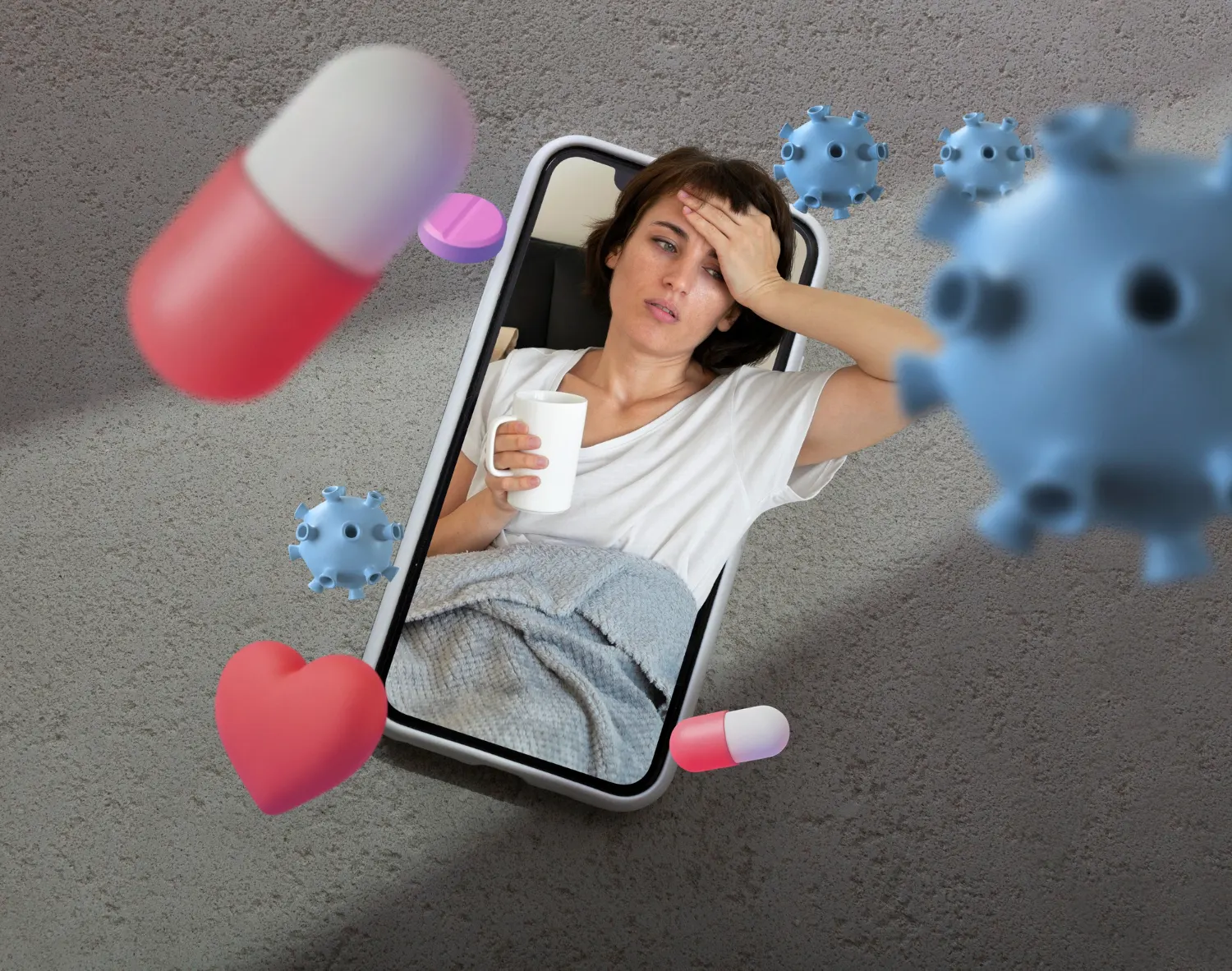Hormones serve as the body’s internal messaging system, orchestrating a delicate symphony of processes that govern everything from metabolism and mood to reproductive function and sleep. For women, the hormonal landscape shifts continuously throughout life—across puberty, pregnancy, perimenopause, menopause, and beyond. Yet despite the critical role hormones play, imbalances in this intricate system often go undiagnosed or misattributed to stress, aging, or unrelated health concerns.
Hormonal imbalances affect millions of women globally, often disrupting their quality of life and overall health. These imbalances can manifest in subtle or severe ways, making it essential to recognize the warning signs early. This article explores seven key signs of hormone imbalance every woman should be aware of, offering evidence-based insights into the causes, symptoms, and actionable strategies for achieving hormonal harmony.
In This Article
Understanding Hormone Imbalance in Women
A hormone imbalance occurs when there is too much or too little of one or more hormones in the bloodstream. Given that hormones regulate so many bodily functions, even minor imbalances can result in significant health effects.
In women, the most commonly affected hormones include:
- Estrogen
- Progesterone
- Testosterone
- Thyroid hormones (T3, T4, TSH)
- Cortisol
- Insulin
These hormones interact dynamically, meaning a change in one often affects others. For instance, chronic stress elevates cortisol, which can suppress reproductive hormones like estrogen and progesterone, leading to menstrual irregularities or infertility.
1. Mood Swings, Anxiety, and Depression
One of the earliest and most overlooked indicators of hormone imbalance is emotional volatility. Women may experience sudden mood changes, irritability, anxiety, or even depressive episodes. While mental health conditions have multifactorial origins, hormonal fluctuations are a significant contributor, particularly during premenstrual syndrome (PMS), postpartum changes, and perimenopause.
Estrogen influences serotonin, a neurotransmitter that affects mood, and dips in estrogen levels can cause sadness, anxiety, and irritability. Likewise, imbalanced progesterone may heighten feelings of tension and unease. Women with thyroid dysfunction—especially hypothyroidism—often report depressive symptoms due to reduced metabolic activity and neurotransmitter production.
2. Irregular or Absent Menstrual Cycles
A woman’s menstrual cycle is a reliable indicator of hormonal health. Hormones like estrogen and progesterone regulate the cycle’s rhythm, and disruptions can signal imbalance.
Common menstrual irregularities include:
- Cycles shorter than 21 or longer than 35 days
- Missed periods (amenorrhea)
- Heavy or prolonged bleeding (menorrhagia)
- Painful periods (dysmenorrhea)
Polycystic ovary syndrome (PCOS) is a common hormonal disorder marked by irregular ovulation and elevated androgens. Women with PCOS may also experience weight gain, acne, and excessive hair growth due to testosterone dominance.
3. Persistent Fatigue and Low Energy
While everyone experiences tiredness occasionally, chronic fatigue—despite adequate rest—can indicate underlying hormone disruption. Cortisol, the primary stress hormone, follows a daily rhythm, peaking in the morning and tapering by night. When cortisol production becomes dysregulated due to chronic stress or adrenal fatigue, it can result in persistent exhaustion.
Similarly, thyroid hormones play a critical role in energy metabolism. Hypothyroidism slows metabolic functions, leading to lethargy, brain fog, and cold intolerance. Ironically, even high cortisol can result in fatigue by disrupting sleep patterns and depleting other hormonal reserves.
4. Sleep Disturbances and Insomnia
Hormonal balance is intimately linked to sleep quality. Estrogen and progesterone help regulate circadian rhythms and promote deep, restorative sleep. As estrogen declines—particularly during perimenopause and menopause—many women experience sleep disturbances or insomnia.
Progesterone has natural sedative properties. A deficiency in this hormone can make it difficult to fall or stay asleep. Elevated cortisol, especially at night, can also impair sleep by keeping the body in a heightened state of alertness.
Hormone-Sleep Interaction Table
| Hormone | Role in Sleep Regulation | Effect of Imbalance |
|---|---|---|
| Estrogen | Supports REM sleep | Insomnia, hot flashes, night sweats |
| Progesterone | Calming effect, aids sleep onset | Difficulty falling asleep |
| Cortisol | Regulates wake-sleep rhythm | Night awakenings, early morning waking |
| Melatonin | Signals sleep onset | Disrupted by high cortisol or light exposure |
5. Weight Gain or Difficulty Losing Weight
Unexplained weight gain or resistance to weight loss—especially around the abdomen—can be a hallmark of hormonal imbalance. Hormones like insulin, cortisol, thyroid hormones, and sex hormones all influence metabolism and fat distribution.
When insulin sensitivity declines, the body stores more fat, primarily in the midsection. This is common in women with PCOS or prediabetes. Elevated cortisol also encourages fat storage, while hypothyroidism slows metabolism, making weight management more difficult despite exercise and healthy eating.
Metabolic Effects of Hormonal Imbalances
| Hormone | Effect on Weight | Common Conditions |
|---|---|---|
| Insulin | Promotes fat storage | PCOS, insulin resistance, prediabetes |
| Cortisol | Increases belly fat | Chronic stress, adrenal dysfunction |
| Thyroid (T3/T4) | Regulates metabolic rate | Hypothyroidism |
| Estrogen | Affects fat distribution | Menopause, estrogen dominance |
6. Hair Loss, Acne, and Skin Changes
Hair thinning or loss, particularly along the scalp’s crown or temples, is often linked to hormonal shifts. Androgens, like testosterone, can shrink hair follicles when unbalanced, especially in women with PCOS. Conversely, low thyroid hormones can lead to brittle hair and dry skin.
Hormonal acne typically appears on the lower face and jawline and flares cyclically, often worsening before menstruation. Estrogen and progesterone fluctuations can increase sebum production, clog pores, and lead to breakouts.
Skin issues may also include increased dryness, itchiness, or pigmentation changes, particularly as estrogen levels drop with age.
7. Low Libido and Vaginal Dryness
Sexual desire and vaginal health are deeply connected to estrogen and testosterone. When estrogen levels fall—such as during menopause or breastfeeding—vaginal tissue becomes thinner, drier, and less elastic, causing discomfort during intercourse.
Testosterone, although present in lower amounts in women, plays a role in libido and sexual satisfaction. A decline in testosterone can lead to reduced sexual desire, decreased sensitivity, and lower energy levels.
These symptoms are not merely physical; they can affect emotional intimacy and quality of life. Unfortunately, many women feel uncomfortable discussing these changes, delaying diagnosis and treatment.
Common Causes of Hormonal Imbalance
Hormonal imbalances don’t occur in a vacuum. They result from a confluence of internal and external factors, including:
1. Life Stage Transitions
Puberty, pregnancy, perimenopause, and menopause are all natural phases accompanied by significant hormonal shifts.
2. Chronic Stress
Ongoing psychological stress increases cortisol, which disrupts other hormonal systems and suppresses reproductive hormones.
3. Poor Diet and Nutrient Deficiencies
Diets high in sugar, alcohol, or processed foods can disrupt insulin and estrogen metabolism. Essential nutrients like magnesium, B vitamins, and omega-3s are vital for hormone synthesis.
4. Endocrine-Disrupting Chemicals (EDCs)
Chemicals found in plastics, personal care products, and pesticides can mimic or block natural hormones.
5. Medical Conditions
PCOS, thyroid disorders, diabetes, and pituitary tumors are all conditions that directly affect hormone levels.
Strategies for Balancing Hormones Naturally
While medication or hormone therapy is sometimes necessary, many women can manage hormone imbalances through lifestyle interventions. Addressing the root cause often leads to more sustainable relief.
Nutritional Strategies
- Include hormone-supporting nutrients like zinc, magnesium, and vitamin D.
- Prioritize whole foods: leafy greens, lean protein, omega-3s (flaxseed, fish), and complex carbs.
- Avoid inflammatory foods such as refined sugars and trans fats.
Stress Reduction Techniques
- Engage in mindfulness, meditation, or yoga to lower cortisol.
- Regular physical activity improves insulin sensitivity and mood-regulating hormones.
- Deep breathing and nature exposure can downregulate the nervous system.
Sleep Hygiene
- Maintain consistent sleep and wake times.
- Avoid screens and stimulants before bed.
- Create a sleep-conducive environment (cool, dark, and quiet).
Environmental Detox
- Use glass or stainless steel instead of plastic containers.
- Choose EWG-rated personal care products.
- Eat organic when possible to reduce pesticide exposure.
When to Seek Medical Help
While lifestyle adjustments can help in mild cases, persistent symptoms should not be ignored. Medical evaluation may include:
- Blood tests for hormone levels (e.g., estrogen, progesterone, TSH, free T3/T4, cortisol, insulin)
- Pelvic ultrasound for PCOS
- Thyroid panel
- Saliva or urine hormone testing in specialized cases
A healthcare provider may recommend hormone replacement therapy (HRT), oral contraceptives, or targeted treatments for thyroid or adrenal conditions based on individual needs.
Conclusion
Hormone imbalances are not just an inconvenience—they’re a signal from the body that something deeper is out of sync. The seven signs explored in this article—mood swings, irregular periods, fatigue, sleep issues, weight gain, skin/hair changes, and sexual health problems—are not isolated issues but interconnected symptoms of a broader hormonal disruption.
By recognizing these early warning signs, women can seek timely intervention, whether through lifestyle changes or medical support. Proactive hormone health not only enhances physical well-being but also empowers women to feel more in control of their bodies and lives. As science continues to deepen our understanding of hormonal wellness, staying informed and vigilant remains a powerful first step.
References
- Menopause.org. (2024). New Meta-Analysis Shows That Hormone Therapy Can Significantly Reduce Insulin Resistance. Retrieved from https://menopause.org/press-releases/new-meta-analysis-shows-that-hormone-therapy-can-significantly-reduce-insulin-resistance
- Rupa Health. (2024). Hormonal Imbalance – All You Need to Know in 2024. Retrieved from https://www.rupahealth.com/post/hormonal-imbalance-all-you-need-to-know-in-2024
- Temple Health. (n.d.). 9 Signs Your Hormones Are Out of Whack. Retrieved from https://www.templehealth.org/about/blog/signs-your-hormones-are-out-of-whack
- Jackson Health. (2024). Three Expert Tips to Help Women Improve Their Hormone Health. Retrieved from https://jacksonhealth.org/three-expert-tips-to-help-women-improve-their-hormone-health
- Cleveland Clinic. (2024). Hormonal Imbalance: Symptoms, Causes, and Treatment. Retrieved from https://my.clevelandclinic.org/health/diseases/22673-hormonal-imbalance
- Bass Medical Group. (2025). 5 Causes of Hormonal Imbalance in Women. Retrieved from https://www.bassmedicalgroup.com/blog-post/hormonal-imbalance-causes-women
- Endocrine Associates of West Village. (n.d.). How Lifestyle Changes Can Help Restore Your Hormonal Health. Retrieved from https://www.endocrinenyc.com/blog/how-lifestyle-changes-can-help-restore-your-hormonal-health
- WebMD. (2025). Signs and Symptoms of Hormone Imbalance in Women. Retrieved from https://www.webmd.com/women/ss/slideshow-hormone-imbalance










0 Comments